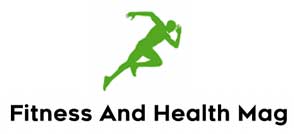Infant formula is enriched with nutrients that ensure the baby’s proper development. However, you should only use them if you cannot breastfeed. Do you want to know more about it?
Hydrolyzed milk is intended for infants who are allergic to cow’s milk protein. It contains the protein compounds broken down into tiny fragments for easier absorption. This, in turn, reduces their ability to cause an allergic reaction.
When Is Hydrolyzed Milk Used?
Like all baby milk, hydrolyzed milk is also used when breastfeeding is not possible. Up to 6 months, a baby should be fed exclusively with milk. If breast milk is not available, the child’s parents have to resort to milk foods that mimic their composition.
While the industry has made great strides, there are significant differences between feeding a baby breast milk and feeding a formula. The most important changes occur at the level of the microbiota.
Using off-the-shelf products can increase the risk of your child suffering from autoimmune problems later in life. However, as we mentioned earlier, there are cases when the child is allergic or intolerant to cow’s milk proteins. In these cases, hydrolyzed milk is the only alternative.
Fortunately, this product is often fortified with micronutrients that aid the baby’s development. One example of this is omega-3 acids, which, according to a study published in 2018, contribute to good cognitive development.
Hydrolyzed milk is used when breastfeeding is not an option.
Also Read: UNHEALTHY WEIGHT LOSS METHODS: WHY YOU SHOULD AVOID THEM
Hydrolyzed Milk: There’s Nothing Like Breast Milk
Despite the wide range of products available for feeding newborns, breastfeeding is always the best option because it offers many advantages for nutrition and the bond between mother and child.
If you cannot breastfeed your child for some reason, one option is to use a breast milk bank. In the first six months, this is a very effective way of providing the child with high-quality food.
Complementary Nutrition Or Complementary Foods
When your baby is six months old, you can give up breastfeeding or breast milk as the only diet. At this point, you can start introducing solid foods. In this way, the baby should get used to its surroundings and know new structures and flavors.
Experts recommend the baby-guided weaning method, in which the baby can eat food independently under supervision. While this feeding pattern does not lead to any improvement in health, it does lead to better adjustment in terms of diet.
It is excellent and essential to developing correct eating habits in the first few years of life. This reduces the rejection of certain foods in adulthood, a step towards a varied and balanced diet.
You should also keep in mind that the baby’s diet shapes its microbiota in the first few years of life. This can affect the risk of illness in the medium and long term.
You should always base your baby’s diet on strengthening their microbiota. This will go a long way towards improving his well-being.
Hydrolyzed Milk, An Alternative For Children With Cow Milk Intolerance
Hydrolyzed milk is an effective alternative for infants with a cow’s milk allergy. However, its consumption is not recommended for all infants, as ingestion of a hydrolyzed product in the early stages can interfere with the production of digestive enzymes.
In the medium term, this leads to intolerance, which can represent a problem with nutrition. In addition, it should be remembered that breastfeeding is always the best option.
Breast milk contains all the nutrients the child needs in an optimal ratio. This ensures correct microbiota development and a lower risk of autoimmune diseases.
When your baby is six months old, you should start introducing solid foods into your child’s diet. This encourages the baby to participate in the development of their eating habits.
This way, it can get used to different textures and flavors. It also reduces the risk that it will later reject certain foods. However, this process should, of course, always take place under the supervision of an adult!
